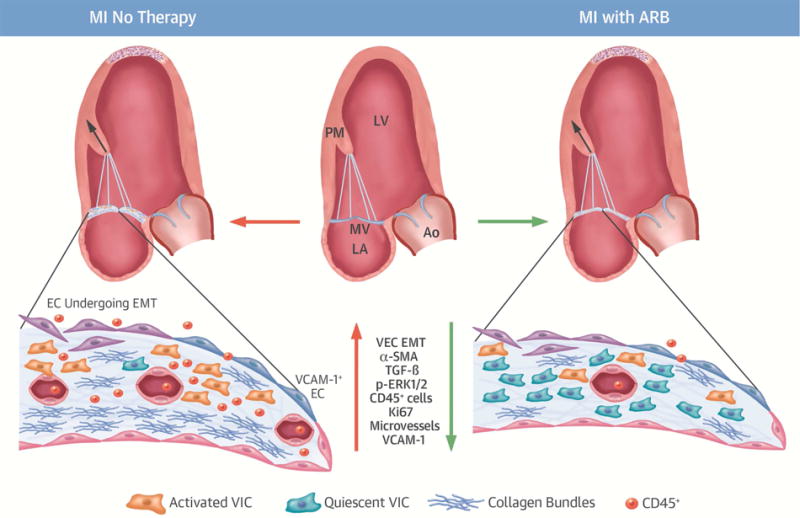Central Illustration. Losartan Reduces Post-MI Profibrotic Mitral Valve Changes Without Eliminating Adaptive Leaflet Growth.

In a controlled myocardial infarction (MI) model, treatment with the angiotensin receptor blocker (ARB) losartan reduces mitral valve (MV) fibrosis, with far less collagen, decreased endothelial-to-mesenchymal transition (EMT) as fibrotic substrate, and less inflammatory endothelial activation (VCAM-1). Compared with untreated MVs of comparable left ventricular (LV) volume, there are far fewer activated valvular interstitial cells (VICs, α-SMA) and fibrosis-associated CD45-positive cells, along with significantly less TGF-β and p-ERK1/2 signaling. Leaflet cell turnover (Ki67) is lower, with fewer microvessels. ARB therapy in the post-MI LV directly modulates MV leaflet adaptation with less fibrosis, but maintained leaflet area growth. This opens the possibility of leaflet-specific therapy to improve MV adaptation and reduce regurgitation and heart failure after MI. Ao = aorta; CD = cluster of differentiation; EC = endothelial cells; LA = left atrium; p-ERK = phosphorylated-extracellular-signal regulated kinase; PM = papillary muscle; SMA = α-smooth muscle actin; TGF = transforming growth factor; VCAM = vascular cell adhesion molecule; VEC = valvular endothelial cells.
